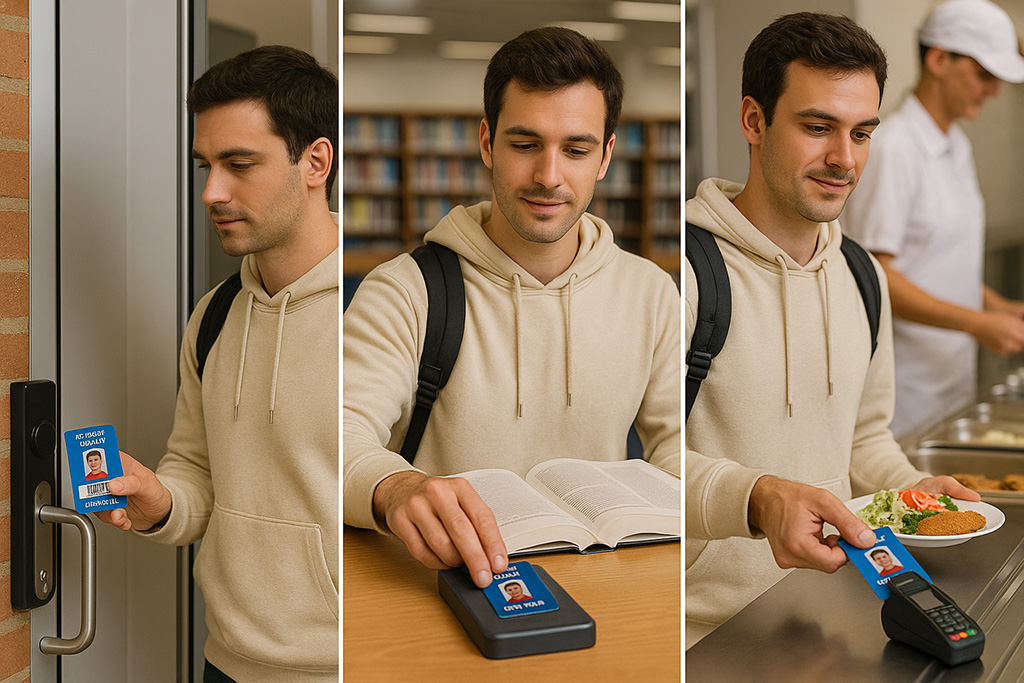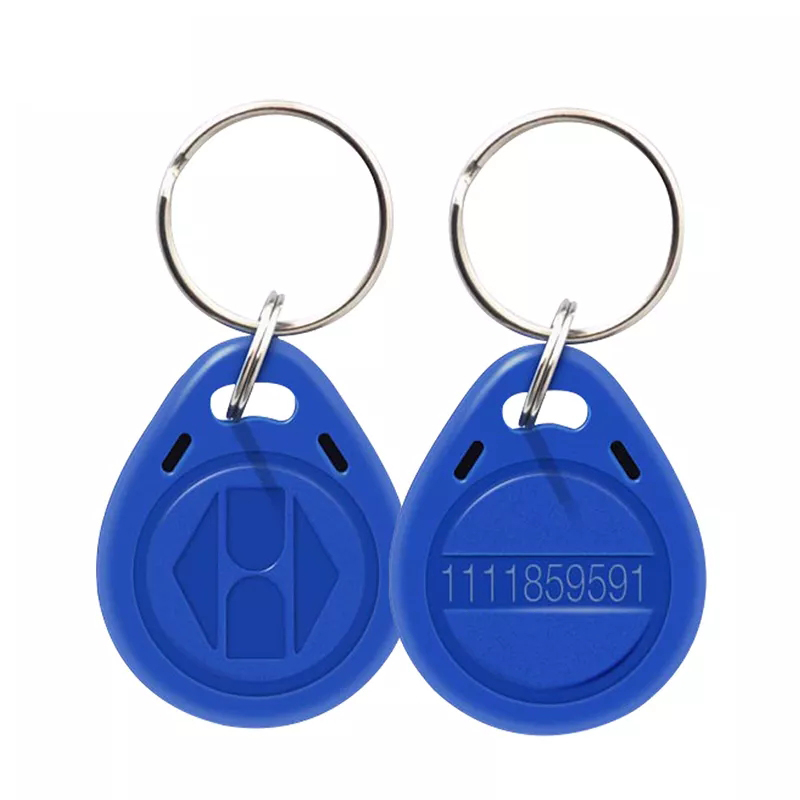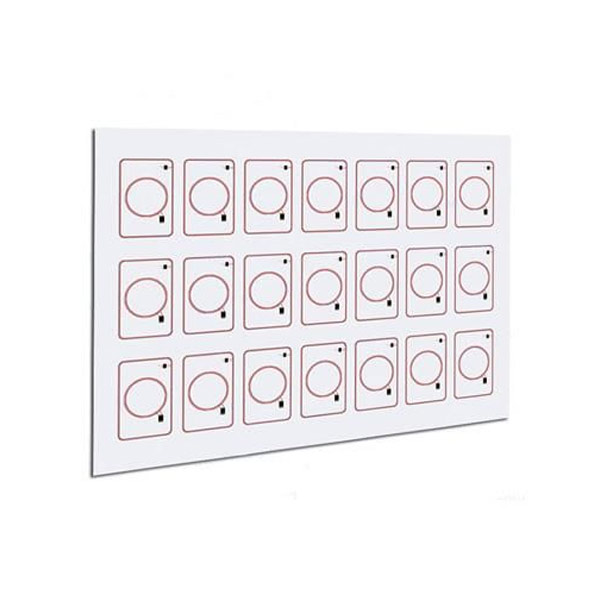
Introduction: Why Student ID Cards Matter
In the digital age, schools and universities are under increasing pressure to modernize their operations and enhance campus security. One of the most effective tools for doing so is the implementation of smart student ID Cards. These cards, typically powered by RFID (Radio Frequency Identification) or NFC (Near Field Communication) technologies, serve not only as identification but also as multi-functional tools for access control, cashless payment, attendance tracking, and more.
A comprehensive student ID Card system ensures a seamless integration of administrative and security functions across a campus. It provides students with a single, convenient method to navigate daily academic life while offering school administrators the infrastructure to monitor and manage facilities more efficiently. The global trend toward digitization in education highlights the critical need for schools and universities to adopt intelligent, integrated solutions like RFID-based student ID Cards.
Modern student ID Cards offer far more than simple identity verification. Thanks to RFID and NFC technology, these cards have evolved into sophisticated tools that support a wide array of campus activities. Below are the primary functions and benefits:
1. Identity Verification
Every student card carries a unique identifier that securely links to the institution's database, providing authenticated access to the student's personal and academic records.
2. Access Control
Cards can be programmed to grant or restrict access to buildings, labs, dormitories, and secure areas. This minimizes the risk of unauthorized entry and enhances overall campus security.
3. Library Management
Integration with the library system allows students to check out books and materials using their ID Card, tracking borrow/return activity and overdue notices in real time.
4. Cashless Payments
Student cards can function as contactless payment methods in cafeterias, vending machines, and bookstores, promoting hygiene and operational efficiency.
5. Class Attendance Tracking
Cards can be used to automatically register attendance, which is especially beneficial for large lecture halls and institutions that require detailed attendance records.
6. Transportation Management
Some universities use the student card for shuttle bus access and fare deductions, streamlining student movement across large campuses.
7. Exam and Event Authentication
During exams or official school events, ID Cards help verify identity quickly and accurately, minimizing the chances of fraud.
RFID & NFC Technologies: The Backbone of Smart Student Cards
RFID and NFC are the two main technologies behind modern student ID Cards. Understanding how they work can help institutions make informed decisions.
RFID (Radio Frequency Identification)
RFID uses radio waves to communicate between a card and a reader. RFID Cards are contactless and can work even if the card is in a wallet or bag. There are two main types:
LF (Low Frequency) – Short range (125 kHz), used mainly for basic ID and access control.
HF (High Frequency) – Longer range (13.56 MHz), supports encryption and multi-applications.
Common RFID chips include MIFARE® Classic, MIFARE® DESFire, and ICODE®.
NFC (Near Field Communication)
NFC is a subset of HF RFID, allowing two-way communication between devices. NFC-enabled student cards can communicate with smartphones and tablets, enabling features like balance checks, mobile payments, and integration with student apps.
Benefits of RFID/NFC student ID Cards include:
Fast, contactless interaction
High data security
Compatibility with multiple applications
Long lifespan and durability
Step-by-Step Guide to Implementing a Student ID Card System
Step 1: Assess Institutional Needs
Start by analyzing your school's current infrastructure and identifying gaps. Consider questions like:
Do we need access control or just ID verification?
Should the card support payments or transportation?
How many users will the system support?
Step 2: Choose the Right Technology
Select between RFID and NFC based on desired functionalities. For higher education institutions that require mobile integration and multi-use, NFC is typically preferred. For basic identification and access, HF RFID may be sufficient.
Step 3: Select a Reliable Supplier
Look for experienced RFID Card manufacturers who specialize in educational solutions. Evaluate their portfolio, data security capabilities, card material options (PVC, PET, biodegradable), and customer support.
Step 4: Integrate with Existing Systems
A robust student ID Card system should integrate seamlessly with:
Library software
Access control hardware
Payment gateways
Learning Management Systems (LMS)
APIs or middleware may be needed to connect existing software with the card system.
Step 5: Design and Print Cards
Work with a provider who offers custom printed student ID Cards, including branding elements like school logos, photos, names, barcodes, and anti-counterfeit features like UV printing or holograms.
Step 6: Test and Deploy
Run a pilot test with a small group to ensure all components work. Once tested, roll out the system campus-wide. Offer training and support to staff and students.
Branding and Customization Options
Customization is vital for both functionality and school identity. A professionally designed student card can include:
Full-color school branding
Personalized student data (photo, name, ID number)
Magnetic stripe, barcode, or QR code
Embedded RFID or NFC chip
Security elements (hologram, signature panel, UV print)
Some institutions even choose dual-interface cards that support both contactless and magnetic stripe functionalities.
Case Studies: Success Stories from Schools and Universities
Case 1: A Smart Campus Rollout in Singapore
A major Singaporean university implemented NFC-enabled student ID Cards that allowed students to access classrooms, pay at food courts, and even use campus lockers. The card system was linked with a mobile app that provided real-time balance updates and push notifications.
Case 2: RFID Attendance System in a European High School
A high school in Germany introduced an RFID attendance tracking system, reducing manual errors and administrative work by 60%. Teachers could monitor attendance instantly, and parents received SMS alerts when a student was absent.
Case 3: Library Automation in South America
A private university in Brazil replaced its barcode-based system with RFID Smart Cards and self-service kiosks. The result was a 40% increase in borrowing efficiency and significant cost savings in manpower.
Choosing the Right RFID Card Partner
When selecting an RFID student ID Card supplier, consider:
Industry experience and client portfolio
Ability to provide both cards and supporting hardware (printers, readers)
Compliance with international standards (e.g., ISO/IEC 14443)
Options for card materials and eco-friendly alternatives
On-time delivery and support services
Working with a specialized RFID factory ensures product quality, proper chip encoding, and system compatibility. It is also beneficial if your partner offers services like pre-printed cards, database linking, and reader configuration.
Future Trends in Student ID Card Systems
1. Mobile Student ID
More institutions are adopting mobile-based student IDs, allowing students to access services using smartphones or smartwatches. This is often powered by Apple Wallet, Google Wallet, or proprietary apps.
2. Cloud-Based Card Management
Cloud platforms allow real-time updates, remote activation/deactivation of cards, and integration with cloud-based LMS and ERP systems.
3. Biometric Integration
Some campuses are combining biometric data (fingerprint or facial recognition) with ID Cards for multi-factor authentication.
4. Sustainability in Card Materials
Eco-friendly card options, such as biodegradable PVC, wooden RFID Cards, and recyclable PET, are gaining popularity in institutions committed to green initiatives.
Conclusion: Building a Smarter, Safer Campus
Implementing a modern student ID Card system is a strategic step toward creating a secure, efficient, and tech-enabled learning environment. By choosing the right technology and implementation partner, schools and universities can enhance operational workflows, reduce administrative burdens, and deliver a better experience for students and staff alike.
As the education sector embraces digital transformation, the student ID Card is evolving from a simple piece of plastic to a gateway to the smart campus ecosystem.
Ready to upgrade your campus with smart RFID student ID Cards? Contactour team today for a free consultation or request a sample pack of our customizable, secure RFID Card solutions.





